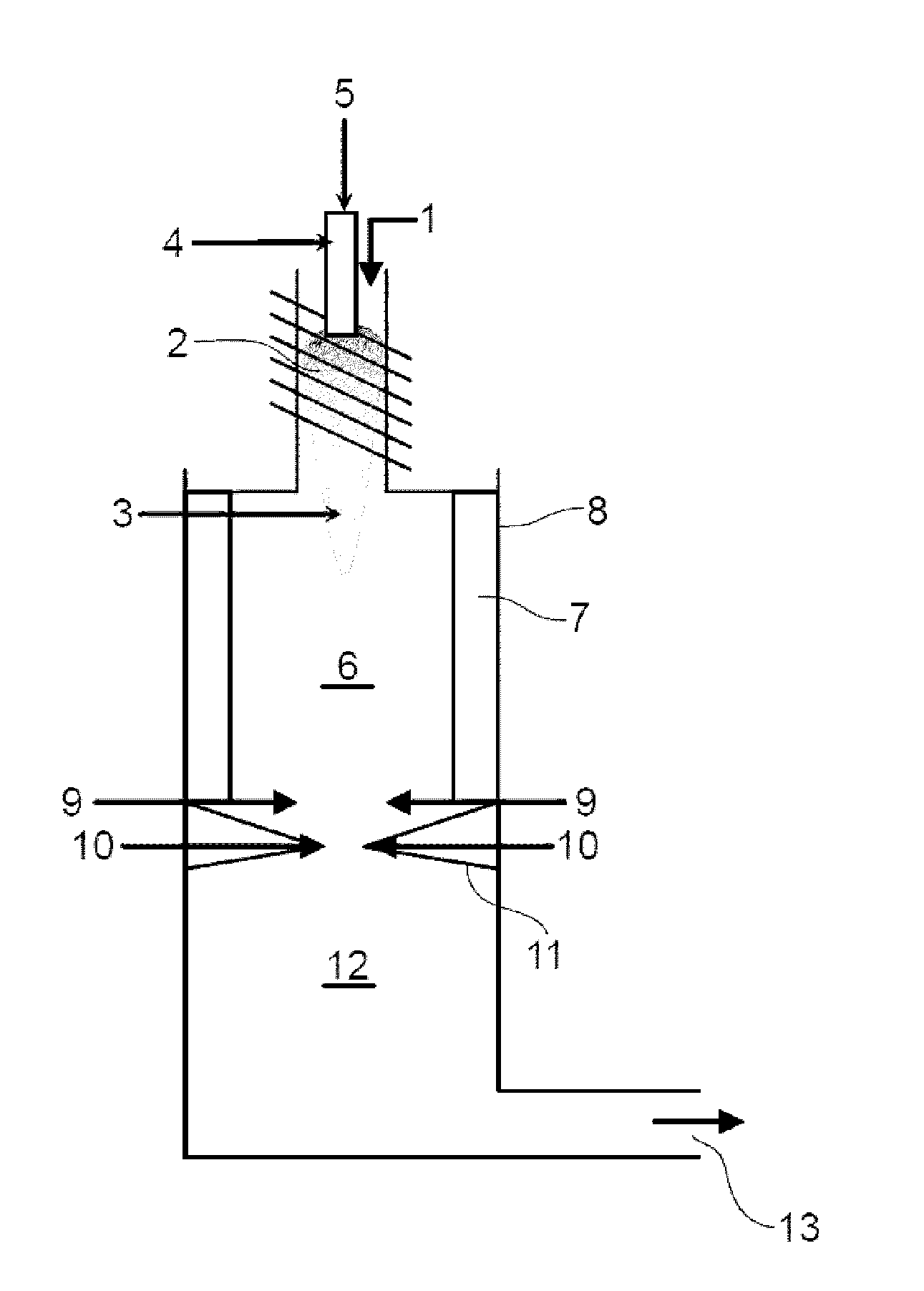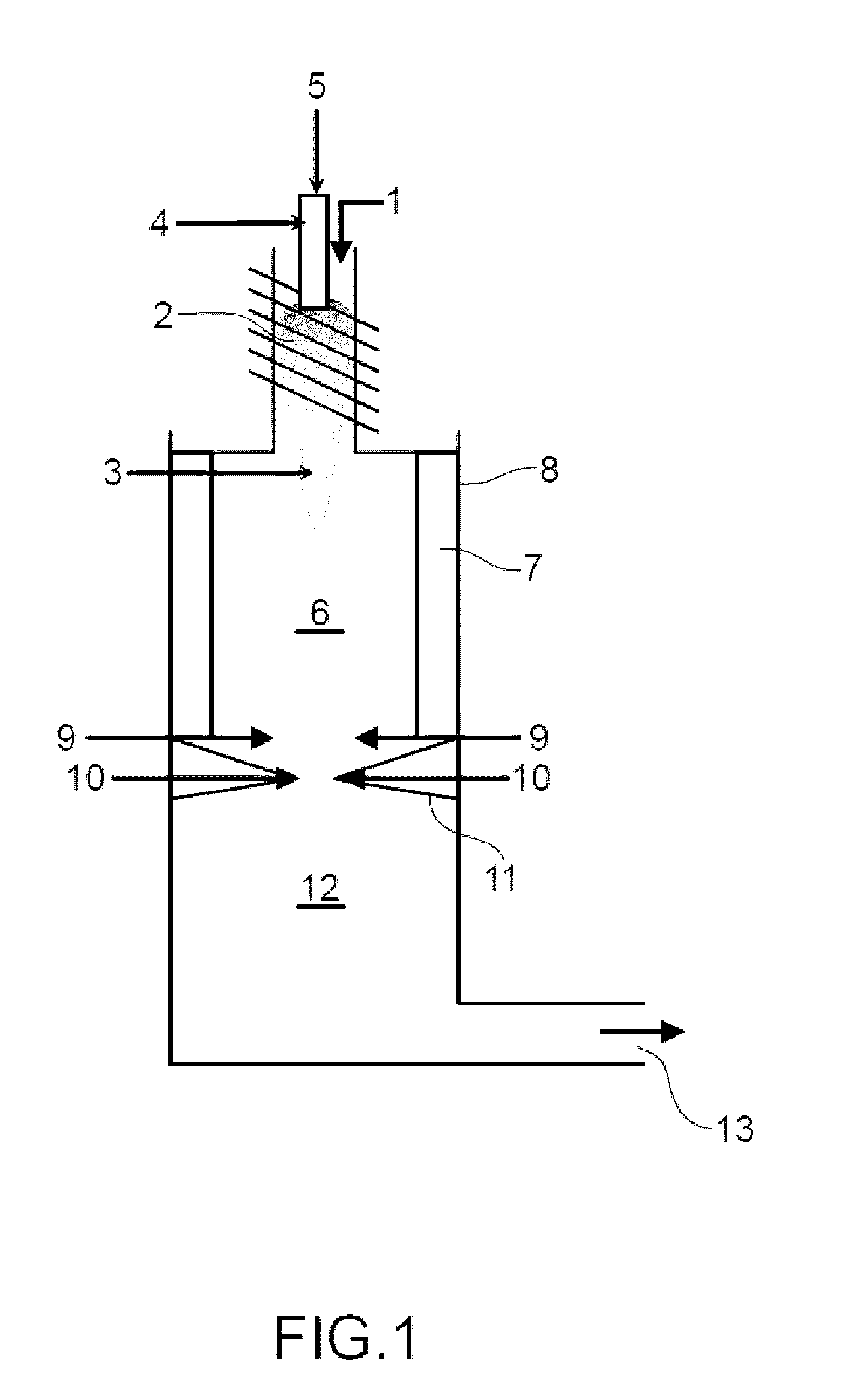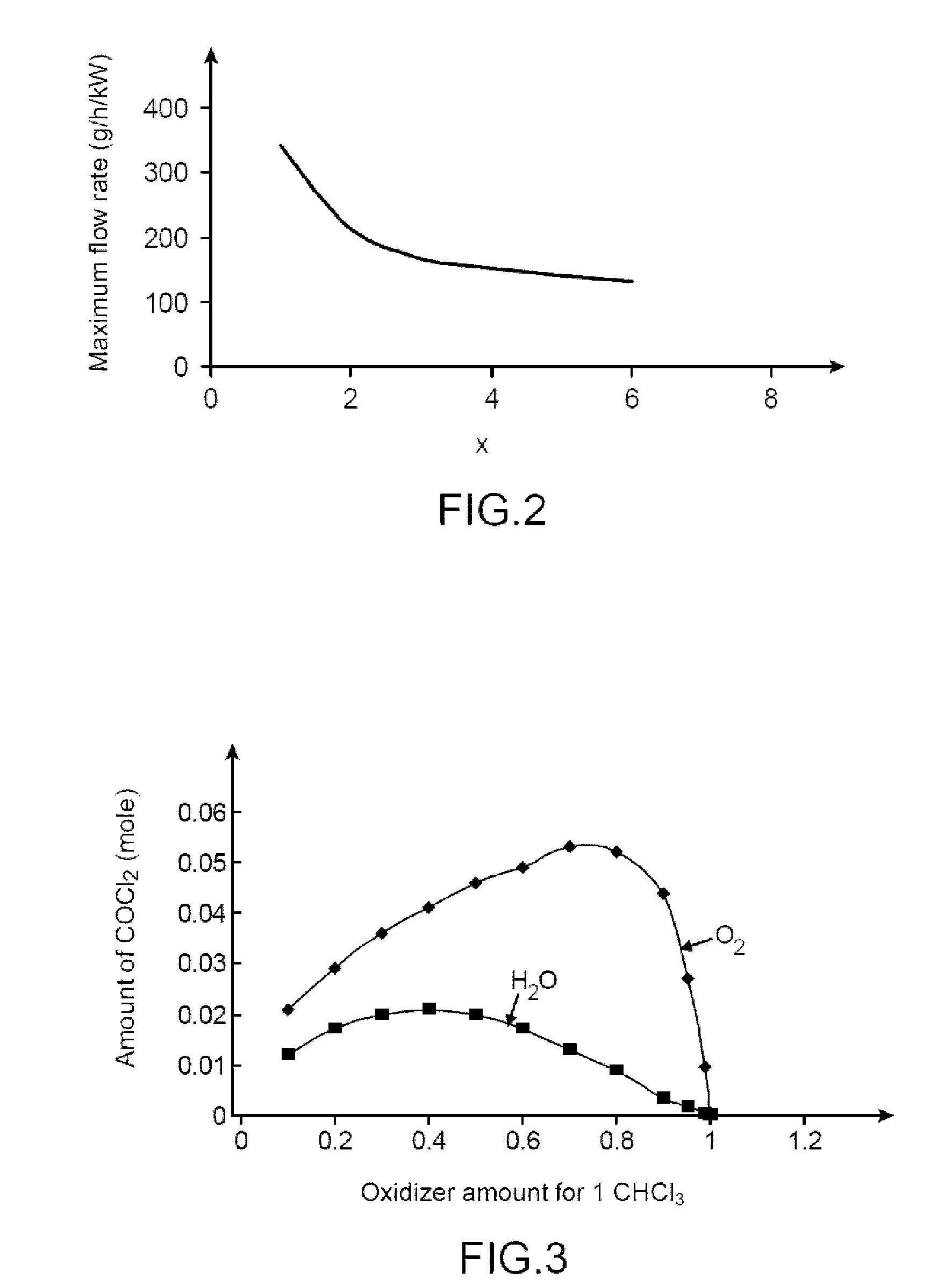Method and device for thermal destruction of organic compounds by an induction plasma
a technology of induction plasma and organic compounds, which is applied in the direction of incinerator equipment, lighting and heating equipment, combustion types, etc., can solve the problems of reducing the efficiency of the method, no real management of wastes, and crucial waste treatment, and achieves the effect of increasing the treatment capacity of the method
- Summary
- Abstract
- Description
- Claims
- Application Information
AI Technical Summary
Benefits of technology
Problems solved by technology
Method used
Image
Examples
Embodiment Construction
[0143]Let us specify first of all that the method and the device according to the invention are defined as being a method and a device for thermal destruction of a load, feed, charge, comprising at least one organic compound.
[0144]Preferably, the feed is composed of (consists of) said at least one organic compound.
[0145]According to the invention, the treated feed is generally a fluid feed, i.e. it is in liquid, gas or powdery form (i.e. in the latter case it forms a flowable powder).
[0146]By organic compound is generally meant a compound comprising, preferably composed of, consisting of, carbon and hydrogen atoms and optionally atoms selected from oxygen, nitrogen, sulfur atoms and from halogen atoms such as chlorine, bromine, iodine and fluorine atoms.
[0147]The organic compound(s) to be destroyed are generally toxic, harmful or dangerous organic compounds for example explosive compounds; and / or radioactive compounds.
[0148]These compounds may for example be organo-halogenated solve...
PUM
 Login to View More
Login to View More Abstract
Description
Claims
Application Information
 Login to View More
Login to View More - R&D
- Intellectual Property
- Life Sciences
- Materials
- Tech Scout
- Unparalleled Data Quality
- Higher Quality Content
- 60% Fewer Hallucinations
Browse by: Latest US Patents, China's latest patents, Technical Efficacy Thesaurus, Application Domain, Technology Topic, Popular Technical Reports.
© 2025 PatSnap. All rights reserved.Legal|Privacy policy|Modern Slavery Act Transparency Statement|Sitemap|About US| Contact US: help@patsnap.com



